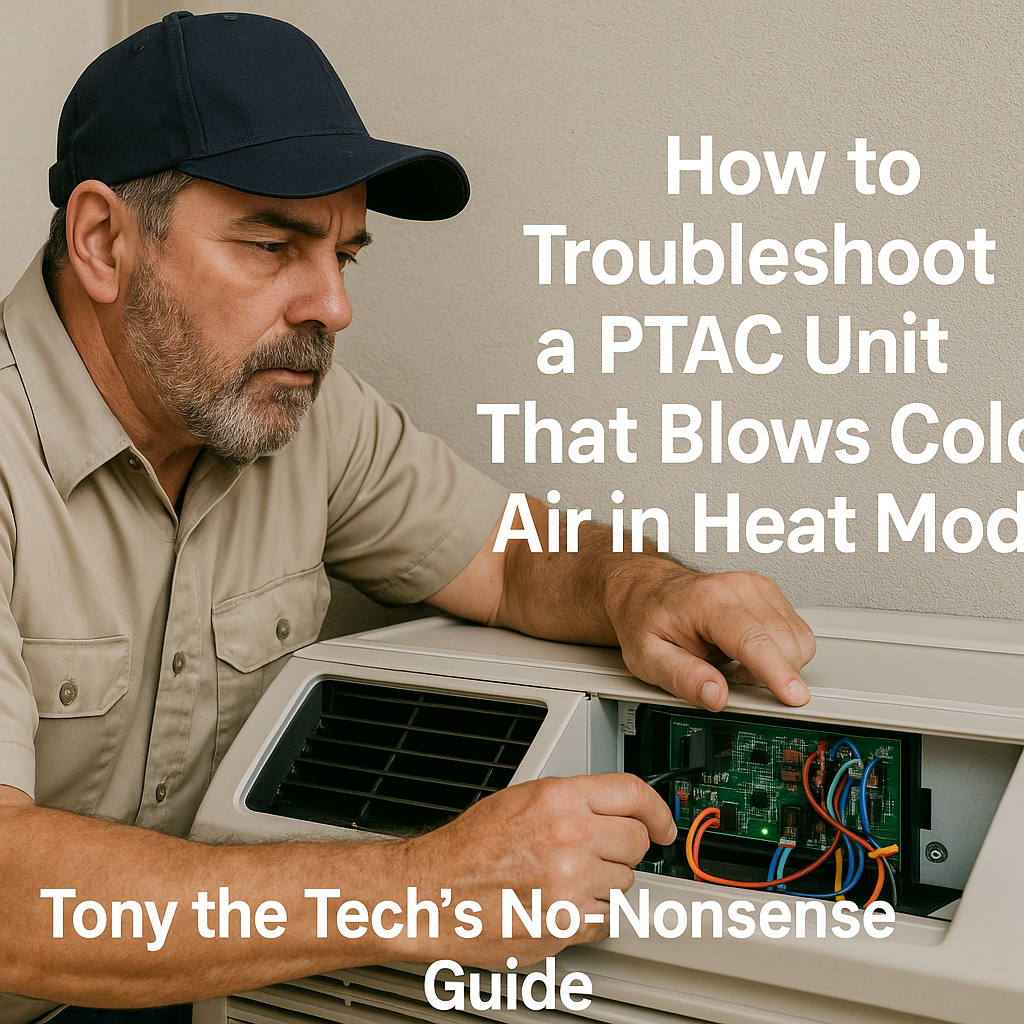If you’re dealing with a PTAC unit that’s supposed to be heating your room but instead is blowing cold air, don’t panic. This is a common problem and usually fixable without major repairs. After 20+ years in the field, I’ve seen the usual suspects that cause this headache — and I’m here to walk you through what to check and what to avoid.
Common Causes Why Your PTAC Is Blowing Cold Air in Heat Mode
Here’s the quick rundown:
-
Thermostat set wrong or malfunctioning
-
Heat kit or heat pump not activating
-
Electrical issues or tripped breakers
-
Dirty filters or blocked air flow
-
Faulty sensors or control boards
Let's dig into each.
1. Thermostat Troubleshooting
First, double-check your thermostat settings. Make sure it’s switched to heat mode, not just fan or cool.
Many PTAC thermostats are simple, but a misprogrammed or faulty stat can prevent the heater from turning on.
Try this:
-
Turn the thermostat to the highest heat setting
-
Wait for the unit to respond (up to 5 minutes)
-
If still blowing cold air, test the thermostat by switching it to off and then back to heat
If that doesn’t work, the thermostat itself might be defective. It’s worth swapping it out or testing with a multimeter if you’re handy.
2. Heat Kit or Heat Pump Not Activating
Depending on your PTAC model, heat may come from an electric heat kit or a heat pump reversing valve.
If your heat kit isn’t turning on, it could be:
-
Blown heating element
-
Faulty relay or control board
-
Loose wiring
Heat pump issues often stem from problems with the reversing valve or low refrigerant.
If you’re hearing the fan but no warm air, it’s time to inspect the electrical components.
3. Check Electrical Connections and Breakers
Many heat failures come down to simple electrical issues:
-
Check if the breaker for the PTAC unit is tripped
-
Inspect the power cord and plug for damage
-
Verify all wiring connections inside the unit are secure
Don’t attempt repairs inside the unit unless you’re comfortable working with live electricity.
4. Dirty Filters and Blocked Air Flow
Sometimes the culprit isn’t mechanical or electrical but simple airflow issues.
A clogged air filter restricts air moving over the heat element or coil, causing the unit to blow cooler air than normal.
Replace or clean your filters monthly during peak use.
5. Faulty Sensors or Control Boards
Modern PTACs use sensors to monitor temperature and protect the unit from overheating.
If a sensor fails or the control board malfunctions, the heater may shut off prematurely.
In these cases, professional diagnostics and part replacement are often necessary.
Quick Fix Checklist Before Calling a Pro
-
Verify thermostat is in heat mode and set above room temperature
-
Inspect circuit breakers and reset if tripped
-
Replace dirty air filters
-
Check for error codes or blinking lights on your PTAC display (consult your manual)
-
Listen for heat kit clicking or buzzing when the heat mode is engaged
When to Call a Licensed Technician
If you’ve tried the basics and your PTAC is still blowing cold air, it’s time for professional help.
Electrical testing, heating element replacements, or refrigerant recharging require specialized tools and licenses.
Tony’s Final Advice
Heating issues in PTAC units are rarely due to a single cause. Think of it like a chain: the thermostat signals the control board, which powers the heat kit or heat pump, while airflow and sensors keep everything safe.
If any link breaks, your heat fails.
Keep your unit maintained, follow safety rules, and don’t ignore small warning signs like unusual noises or smells.
In the Next article read about: How to Extend Your PTAC’s Life with Preventive Maintenance: Tony the Trusted Tech’s Practical Guide







